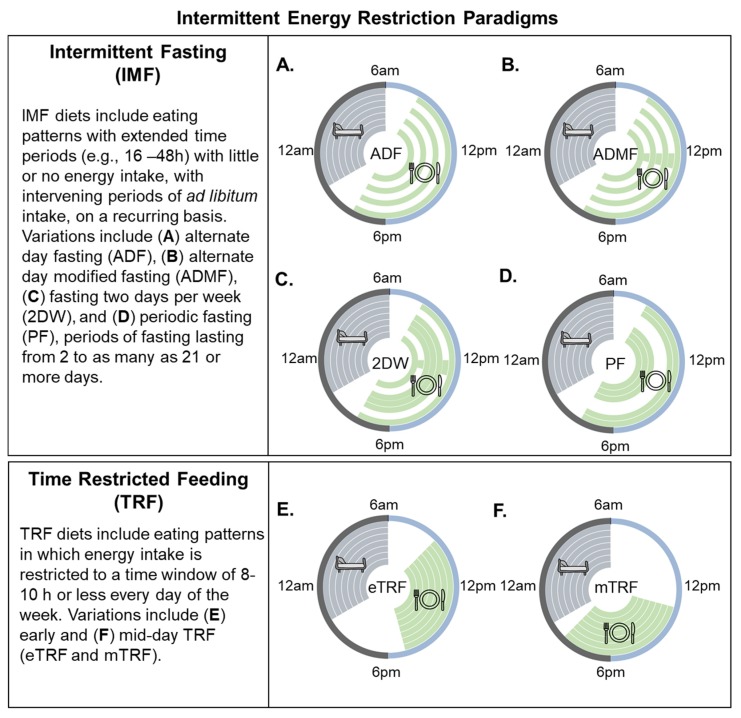Figure 1.
Popular variations of intermittent energy restriction. Within the circles, each ring represents a distinct 24 h day. Green shaded areas represent eating periods. Grey shaded areas indicate the sleeping time, and white circles/spaces indicate fasting periods. Intermittent fasting (IMF) is characterized by recurring periods (e.g., 16–48 h) with little or no energy intake. Many variations have been used to study the effects of IMF on body weight, including (A) alternate day fasting (zero calorie intake on fast days), (B) alternate day modified fasting (>60% energy restriction on fast days), and (C) fasting or modified fasting on two days per week (2DW). (D) Periodic fasting involves fasting for 2 to as many as 21 or more days. This IMF paradigm is acknowledged in the present review but will not be discussed as there are few studies in the literature. Time-restricted feeding (TRF) is characterized by eating patterns that are restricted to a short (<8–10 h) interval each day, such as during the (E) early or (F) middle portion of the day.

